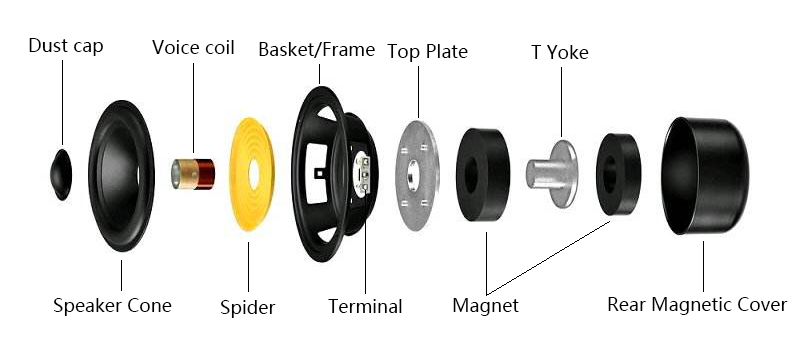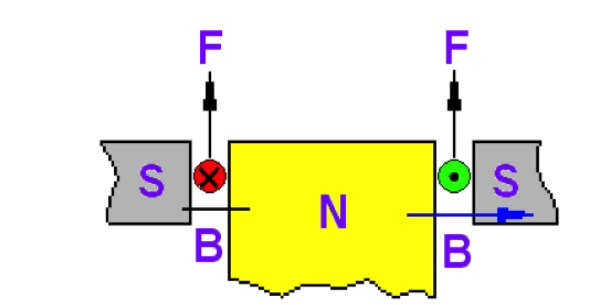Working Principle of a Speaker
A speaker is a remarkable device converts electrical signals into audible sound waves.This enriching our audio experiences across various applications. Understanding its components and how they function together provides insight into the intricate technology behind this essential audio equipment.
At its core, a speaker operates on the principle of electromagnetism. When an electrical audio signal is applied to the speaker, it passes through a voice coil—a wire coil suspended in a magnetic field created by a permanent magnet. The interaction between the current flowing through the coil and the magnetic field causes the coil to move back and forth rapidly. This movement, in turn, vibrates a diaphragm or cone attached to the coil. As the cone vibrates, it compresses and rarefies the air around it. Generating sound waves that correspond to the original electrical signal.
Components of a Speaker
- Magnetic Circuit System: This includes components like the top plate, T-yoke, magnets and frame. For the magnets usually use Alnico magnet and Ferrite magnet . These elements work together to create a stable magnetic field. It interacts with the voice coil to produce sound vibrations efficiently.
- Vibration System: Central to this system is the voice coil, which converts electrical signals into mechanical motion. It is connected to a diaphragm or cone (often made of paper or similar material) that moves air to produce sound waves. The suspension system, including the spider and surround, supports the voice coil’s movement while providing stability and control.
- Auxiliary Components: These include the basket frame that supports the entire speaker structure, the dust cap or dust dome that protects the inner components from debris, and the lead wires that connect the voice coil to the speaker terminals for signal input.

Functions of Each Speaker Component
- Voice Coil: Converts electrical signals into mechanical motion, driving the vibration of the diaphragm or cone to produce sound.
- Cone or Diaphragm: Vibrates in response to the movement of the voice coil, pushing air to create sound waves.
- Magnet and Magnetic Circuit: Provides a stable and strong magnetic field that interacts with the voice coil, enabling efficient conversion of electrical signals to sound waves.Usually use Y30,Y35 Ferrite magnet.
- Suspension System:Controls the movement of the diaphragm or cone. Thus ensuring smooth and controlled motion of the voice coil while maintaining stability.
- Basket Frame: Supports and holds all components together, providing structural integrity to the speaker assembly.
- Dust Cap: Protects the inner components from dust and debris, while also contributing to the speaker’s frequency response characteristics.
HS magnets is a professional magnets manufacturer with 20 years experience.We welcome customers to discuss with us about the various uses of magnets. If you need accessories for speakers, you can also browse our website or email us:info@hsmagnet.com



